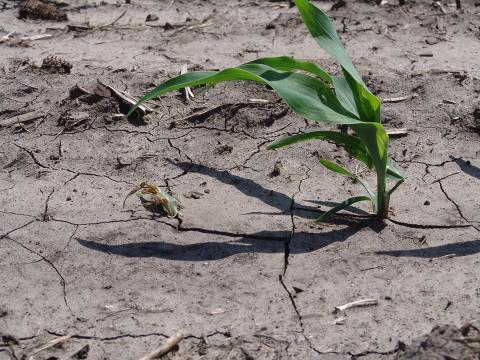Diverse Seedling Diseases Present in Nebraska Soybeans
June 6, 2024
Identifying some of the common soybean diseases in Nebraska can be difficult, as they often share similar features. Here, Extension Specialist Dylan Mangel outlines characteristics and management options for each seedling disease.
This Week on N Field: Optimize Variety Placement to Boost Soybean Yields
March 29, 2024
Nebraska Extension Specialist Dylan Mangel explains the importance of soybean variety placement for disease control and fungicide efficacy, which can reduce your bottomline.
Field Conditions Shift to Favor Soybean Phytophthora Stem and Root Rot
July 20, 2023
Dry conditions early limited many seedling diseases. But with moisture increasing across the state in the last few weeks, PRSR is beginning to show up on farms.
Phytophthora Root and Stem Rot is Appearing in Nebraska Soybean Fields
July 21, 2022
Disease development will be most rapid in low areas of the field that are poorly drained or where compacted soils are present, but can occur in well-drained fields during periods of excessive moisture.
Conditions Favor Seedling Diseases in Early Planted Corn and Soybeans
May 25, 2022
As heavy rains and cool soils continue during early plant development, be sure to monitor seedling emergence and stand establishment to detect diseases as early as possible.
Corn and Soybean Disease Update: Southern Rust, Frogeye Leaf Spot, and Phytophthora Root and Stem Rot
July 21, 2021
Following identification of southern rust, Phytophthora root and stem rot, and frogeye leaf spot in areas throughout the state, producers are encouraged to scout and be prepared to apply the appropriate fungicide treatments.
Soybean Disease Update
March 19, 2020
Plants under stress due to environmental factors, such as extreme temperature and moisture are more susceptible to disease, and many were under stress due to the unique environmental conditions in 2019.
Phytophthora Root and Stem Rot Developing in Soybeans
July 27, 2017
As conditions heated up the last two weeks, the fungus causing phytophthora root and stem rot became active in irrigated fields and those fields that received significant rain over the past couple weeks. Growers are encouraged to scout for this disease and, if found, manage through seed selection and treatment for the next crop.







